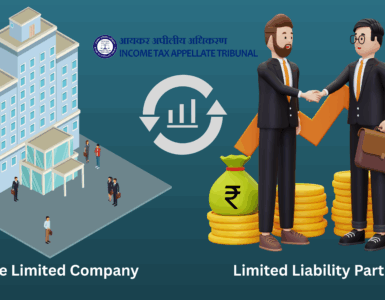ECommerce
There is no standard definition of the word ‘E-commerce’. It generally means a method of conducting business through electronic means rather than through physical means. Or in other words, buying and selling products through the digital medium, rather than from a brick-and-mortar format.
The term takes into account not just the act of purchasing goods and / or availing services through an online platform but also all other activities associated with transaction such as:-
- Delivery
- Payment facilitation
- Supply chain and service management.
Regulatory Frameworks which governs E-commerce in India:
- Indian Contract Act, 1872
- Copyright Act, 1957
- Trademark Act, 1957
- Patent Act, 1970
- Information Technology Act, 2000
- Indian Penal Code, 1860 etc.
Structure:
Setting up an e-business entails a host of decisions to be taken in structuring how the business should be organised, how the members will share the company’s interests and the rights and liabilities of each party. Additionally, while structuring the business, one needs to evaluate the need for set-up entities in different nations, if the business is to be conducted across geographies. Such an entity may be set up as a branch office, liaison office or a representative office. The pros and cons of each of such entity entails a decision-making process. For example, a branch office would be entitled to carry on certain activities whereas a liaison office cannot undertake commercial operations on behalf of the company.
So, the first step will be to determine whether the start-up should be a partnership firm, a private company or a public company.
Partnership Firm:
A partnership firm can be formed under the provisions of the Indian Partnership Act, 1932. This structure offers maximum flexibility in structuring economic participation by the founders and investors as the members of the firm can dispose of the property and incur any liability within the scope of the business. This flexibility facilitates quick decisions. However, since a partnership firm is not a separate legal entity from its members and the partners may be personally liable for any loss that may occur. Additionally, a partnership firm cannot make a public offer and the partners incur personal liability for any loss that may occur.
Limited Liability Partnership:
In 2008, the Limited Liability Partnership Act, 2008 (LLP Act) introduced LLPs in India. An LLP is a beneficial business vehicle as it provides the benefits of limited liability to its partners and allows its members the flexibility of organising their internal structure as a partnership based on an agreement. At the same time, an LLP has the basic features of a corporation including separate legal identity.
An LLP consists of ordinary partners and designated partners (DP). DPs are responsible for the regulatory and legal compliance of an LLP in addition to liabilities ordinarily applicable to other partners of an LLP.
Private Company:
A private company can be incorporated under the provisions of the Companies Act, 1956 (Companies Act) with a minimum paid-up capital of Rs1 lakh. One of the main advantages of a private company is that the shareholders can restrict the transfer of shares. This provides the shareholders with greater control over the affairs of the company. However, the liability of the shareholders in a private company is limited to the extent of their share in the company. Also, the company is prohibited from making an invitation to the public for shares or debentures.
Public Company:
A public company can be incorporated with a minimum paid up capital of Rs 5 lakh under the provisions of the Companies Act.41 A public company may make an offering of shares to the public. Also, the liability of the shareholders is limited to the extent of their share in the company. However, the shareholders cannot place restrictions on the right to transfer of shares.
There is relatively a higher degree of flexibility in terms of investment in a private company or a partnership firm, as the members can take quick decisions with respect to the amount and manner of investment to be made in the company. A public company, however, is required to follow the relevant procedures as detailed in the Companies Act. In the event that foreign equity participation or investment is proposed to be made to the company, the provisions of the Foreign Exchange Management Act,1999 in this regard would have to be complied with “Foreign Direct Investment” issues.
Transfer Pricing:
At present, a large portion of world trade consists of the transfer of goods, intangibles and services within multinational enterprises through the Internet. Hence, the determination of their tax liabilities, in each jurisdiction is a matter of concern and importance.
Transfer pricing refers to the determination, for tax purposes, of prices charged or paid upon the transfer of physical goods and intangible property or the supply of services between associated enterprises in different tax jurisdictions.
Various Provisions which are useful to determine Transfer pricing are:-
- Arm’s Length Price
The provisions of Transfer pricing primarily require any income arising from an international transaction to be computed ’having regard to the arm’s length price’. All expenses/interest incurred, as part of the transaction would also be subject to arm’s length pricing.
The term ’arm’s length price’ has been defined under Section 92F(ii) of the Income Tax Act as, ‘A price, which is applied or proposed to be applied in a transaction between persons other than associated enterprises, in uncontrolled conditions’.
- Associated Enterprise
The definition of an ‘associated enterprise’ consists of two parts: the first part deals with the concept of an associated enterprise per se, whereas, the second part exhaustively lists down the circumstances in which two enterprises are deemed to be associated enterprises.
The task of locating appropriate comparable transactions is perceived to be the most difficult transfer pricing challenge arising from new market transactions. This arises from the nature of the business models being adopted in the new economy. In general, the evolution of business models towards greater integration of transactions among related entities, and greater specialization of functions all could make identification of comparables more difficult.
Tax Related Issues
Some of the fundamental tax-related queries raised by the evolution of cross-border e-commerce transactions may be summarized as follows:
- Is there a need to develop new norms and tenets of interpretation to determine the nature and character of income from cross-border e-commerce transactions?
- Is there a need to create new definition and meaning of permanent establishment (PE)?
- Is there a need to change the basis of taxation (for example, residence-based taxation)?
- While considering taxation of e-commerce transactions, should principles of tax neutrality be adhered to?
Unless these issues are addressed, an erosion of the tax base may take place, especially for developing and underdeveloped countries.
In cases of cross-border e-commerce transactions, the tax issues are more complex because, according to the recognized principles of international taxation, when a resident of one country earns income from economic activity in another country, both countries have a right to tax the same income: the home state based on residence rule and the host state based on the source rule of taxation. While the principles of applying the source rule in the case of the conventional method of transactions have been fairly established, those for the e-commerce transactions pose considerable difficulties.
The Organization for Economic Cooperation and Development (OECD) has been developing proposals in pursuit of an international consensus on e-commerce issues. It has prescribed certain guidelines for governments to adhere while formulating new provisions regulating taxation of e-commerce transactions:-
- The government should promote a pro-competitive environment to allow electronic commerce to flourish, work to reduce and eliminate unnecessary barriers to trade, and act when necessary to ensure adequate protection of key public interest objectives in the digital world, just as they do in the physical world;
- when required, government intervention should be proportionate, transparent, consistent, and predictable, as well as technologically neutral; and
- The government should recognise the importance of continued cooperation among businesses in standards setting, and in enhancing interoperability within an international, voluntary, and consensus-based environment.
Conclusion:
The rapid pace of e-commerce development has generally left the legal system struggling to keep up with the pace. In much the same way as companies doing e-commerce are adopting new business procedures and rules, the legal system is also trying to adapt existing laws to fit new settings where it is simply unclear how these laws will apply. In the midst of this legal disorder, India is one of the few countries across the globe that has enacted an e-commerce legislation. However, much more is needed to effectively regulate the sector.
To Read the Second Part in the Series. Click Here.




